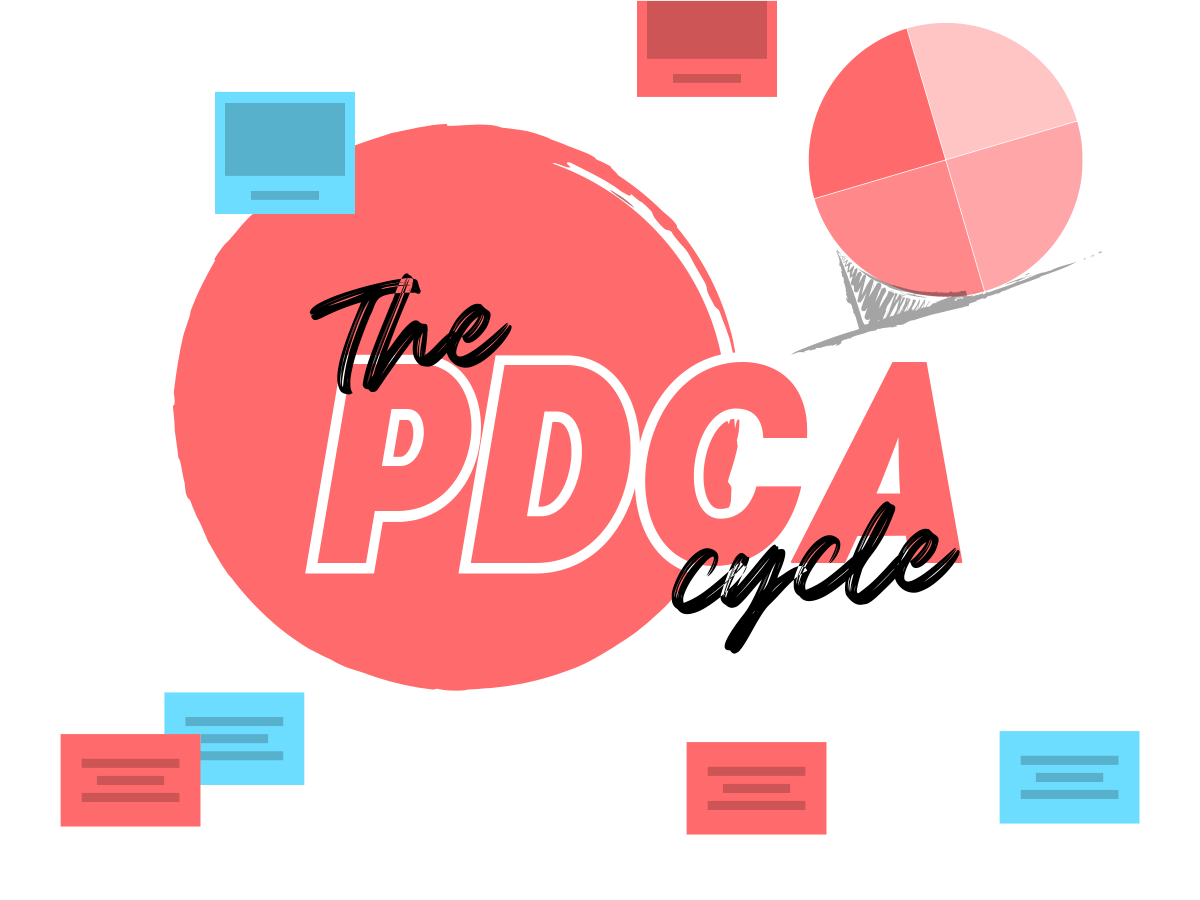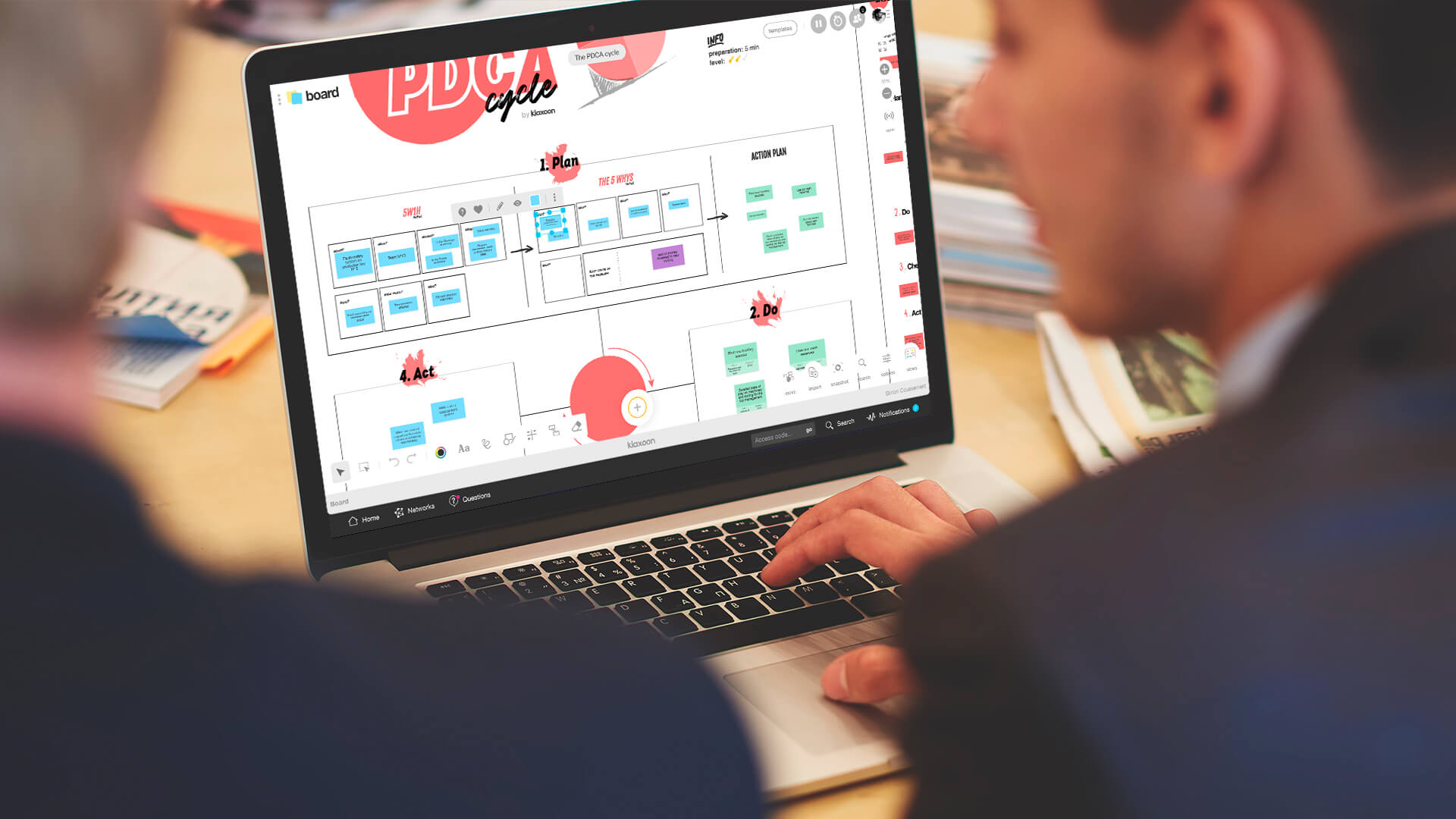The PDCA cycle: the virtuous circle for quality improvement
Published on February 14, 2025
The PDCA cycle: the virtuous circle for quality improvement


When it comes to project or team management, are you looking to continuously improve your performance? If so, try the PDCA cycle, also known as the Deming Wheel, which comes from the Kaizen approach to continuous improvement, and guides you through 4 steps: plan, do, check and act. Each step leads to the next, and creates a virtuous circle. This way, the team improves constantly, and so does your performance!

The PDCA cycle or Deming Wheel is a continuous improvement method that takes its name from its inventor, a statistical quality guru in the industry. Now commonly used in countless other areas and team management, it consists of improving project performance by following 4 steps:
This is why the Deming wheel is also known as the Deming cycle or PDCA cycle.
This method comes from the Japanese Kaizen approach, a continuous improvement process based on concrete, simple and inexpensive actions. The principle is to work as a team to apply small incremental changes that, over time, will create a profound change and improve the quality of your service, your product, and even your organization.
By spinning the Deming Wheel, your team acquires new knowledge and skills at each stage, which they can reuse in the next one. This way, you create a real virtuous circle, where you set out your quality standards.


At each step, keep clear track of your collective thinking!
Not only can the Deming Wheel, or the PDCA method, be applied to all business sectors, but this Klaxoon template can also be used with all types of teams, even extremely large ones, and even for hybrid working. In person, on the go or working remotely, Klaxoon’s whiteboard gives you the freedom to spin the wheel from anywhere.
This freedom means the whole team can really get involved in project management. Be it for technical, manufacturing, design, or customer relations departments, all your employees list their tasks to be completed or fixed, throughout the cycle, to guarantee the quality of the project. Here, collective intelligence is used to improve the project as a whole!
This management method, which focuses on quality management, allows you to anticipate problems rather than spend time fixing them once they arise. No more lost efficiency, time and money as a result of problem-solving in dribs and drabs!
What's more, the virtuous circle created by the Deming Wheel avoids you having to readjust every time there's a problem. Your improvements are continuous and long-lasting. So, you constantly improve your management, at well as your products and your customer satisfaction!
Start by inviting all your team members to your Board, and then launch the “Plan” stage.
As you can see on the template, this stage takes place in 3 steps to work properly:
Copy the selected actions to the “Do” section, using drag and drop. In Dimensions, enter the names of the action owners, and the implementation date defined as a team.
Each participant can then spend the time they need to accomplish their tasks, before the team agrees on a synchronous meeting to move on to the next stage.
Copy the selected actions into the “Check” section, and launch a Poll Question under each action, to assess its effectiveness together. If an action does not get the maximum number of stars, discuss it in the text box so you know how to change it later in a way that suits all the team.
Finally, in the “Act” section, check together if all the actions selected are effective and useful enough to be long-lasting.
If you have to restart the wheel, be reassured: this doesn’t mean you have failed, because you’re not starting from scratch! Your team has learned a lot, and you’re well on the way to continuous improvement together!
Get inspired by other templates from the same categories
Unlock your teamwork potential